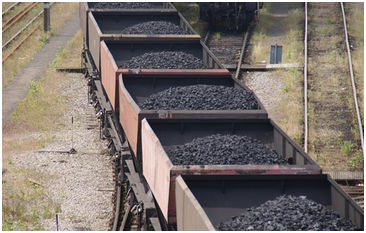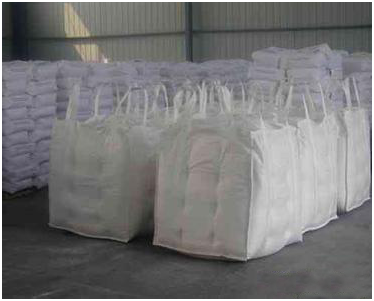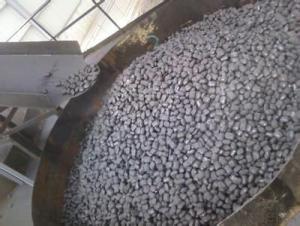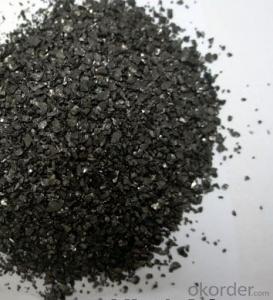Recarburizer FC 95 of Graphitized Petroleum Coke
- Loading Port:
- Qingdao
- Payment Terms:
- TT OR LC
- Min Order Qty:
- 10 m.t
- Supply Capability:
- 300000 m.t/month
OKorder Service Pledge
OKorder Financial Service
You Might Also Like
Recarburizer Application:
- Lower the impurities in the cast iron,
- Choose the right recarburizer can lower the casting cost.
- Recarburizer is essential auxiliary additives for production of high quality steel .
- Also it can can be used as additive for produce other product like brake pad used as friction materials;
- High quality recarburizer is after graphitizing process,under high temperature,the arrangement of carbon atoms in microstructure of graphite.
so call it graphitization ,graphitizing can lower the impurities in recarburizer, increase the carbon content, lower the sulfer content.
Product categories:
At present China have 3 Type Recarburizer:
- Graphite powder ,the dust power of graphite electrode
- Calcined Petroleum Coke part of domestic steel factory use it as recarburizer.
- Graphitized Petroleum Coke ,as recarburizer used for steel casting


- Q:What is carbon black dye?
- Carbon black dye is a type of dye that is derived from carbon black, which is a fine black powder made from the incomplete combustion of hydrocarbon materials. It is commonly used as a pigment and dye in various industries, including the manufacturing of ink, paint, rubber, plastics, and textiles. Carbon black dye is highly valued for its intense black color and excellent lightfastness, meaning it does not fade easily when exposed to sunlight or other sources of light. Due to its strong coloring properties, carbon black dye is also used to add depth and darkness to other colors, making them more vibrant and visually appealing. Additionally, carbon black dye is known for its good heat stability, chemical resistance, and electrical conductivity, making it suitable for a wide range of applications.
- Q:What are the uses of carbon black?
- Due to its unique properties, carbon black finds wide-ranging applications in various industries. One of its primary uses is as a reinforcing filler in rubber materials, enhancing their strength, durability, and resistance to wear and tear. This makes them suitable for various applications, including tires, conveyor belts, gaskets, hoses, and shoe soles. Moreover, carbon black serves as a pigment in inks, coatings, and dyes. Its high tinting strength and ability to absorb ultraviolet light make it an excellent choice for coloring plastics, paints, and printing inks. Additionally, it is employed in toners for photocopiers and laser printers, ensuring high-quality printing with its dark color. Furthermore, carbon black is valuable in the manufacturing of electrodes for batteries and fuel cells. Its electrical conductivity and large surface area enhance the performance and efficiency of energy storage devices. Additionally, it is used in the production of carbon brushes, crucial components in electric motors and generators. In the construction industry, carbon black acts as a filler in concrete and asphalt, improving their strength, durability, and resistance to weathering. It reduces cracking and extends the lifespan of these materials. Additionally, it is utilized in the production of conductive polymers, which aid in static dissipation and electromagnetic shielding in various construction materials. In conclusion, carbon black has diverse applications across multiple industries. Whether it is reinforcing rubber, coloring inks and coatings, enhancing energy storage devices, or strengthening construction materials, carbon black plays a vital role in improving the performance and durability of various products.
- Q:Does alumina react with carbon?
- NotThe smelting of Al in industry can only be done by electrolysis. Even at high temperatures, the reducibility of C is not as strong as Al, and the melting point of Al2O3 is very high. At this temperature, C has been gasified
- Q:What is the role of carbon in respiration?
- The role of carbon in respiration is to serve as the primary fuel source. Carbon-containing molecules, such as glucose, are broken down during cellular respiration to release energy that can be utilized by the organism. Carbon atoms are ultimately converted into carbon dioxide, which is exhaled as a waste product.
- Q:How does carbon impact the availability of freshwater resources?
- Carbon can impact the availability of freshwater resources through its role in climate change. Increasing carbon emissions lead to a rise in global temperatures, causing changes in precipitation patterns and melting of glaciers. These changes can result in droughts, reduced snowpack, and altered river flows, ultimately affecting the availability and quality of freshwater resources.
- Q:Paint paint fluorocarbon paint which expensive?
- After several decades of rapid development, fluorine coating has been widely used in various fields of construction, chemical industry, electrical and electronic industry, machinery industry, aerospace industry, household products. Become the acrylic coating, polyurethane coatings, silicone coatings and other high-performance coatings, the highest overall performance of the coating brand. At present, there are three types of fluoro resin coatings, such as PTFE, PVDF and PEVE, which are widely used.In short, paint is fluorocarbon paint evolved =. = which of the more expensive ones depends on the brand of paint?.Hope the answer helps! ~
- Q:What is the role of carbon 60 in industry? Can it be interchanged with the chemical properties of carbon? What is the chemical structure of carbon 60?
- Used to strengthen metals; used as a new catalyst for storage of gases
- Q:What are the impacts of carbon emissions on marine life?
- Carbon emissions have significant impacts on marine life. The release of carbon dioxide into the atmosphere leads to ocean acidification, which disrupts the balance of pH levels in the water. This affects the ability of marine organisms to build and maintain their shells or skeletons, particularly in coral reefs and mollusks. Additionally, rising temperatures due to carbon emissions contribute to coral bleaching, leading to the loss of crucial habitats and biodiversity. Furthermore, increased carbon dioxide levels can alter the behavior, reproduction, and growth rates of various marine species, ultimately impacting the entire marine ecosystem.
- Q:What are the applications of graphite in industry?
- Graphite possesses distinct properties that make it suitable for a range of applications across industries. Here are several key uses of graphite in different industrial sectors: 1. Lubricants: Given its low friction coefficient, graphite is extensively employed as a solid lubricant in industries that encounter high temperatures and extreme pressures, like automotive, aerospace, and heavy machinery. 2. Refractories: Graphite's exceptional heat and chemical resistance make it an ideal material for manufacturing refractory products. It helps line furnaces, crucibles, and other high-temperature equipment in metal production, glass manufacturing, and chemical processing. 3. Electrical industry: Graphite's excellent electrical conductivity makes it widely utilized in this sector. It is employed to produce electrodes, brushes, and contacts for electrical motors, generators, and batteries. Furthermore, graphite serves as a component in electrical discharge machining (EDM) and conductive paints and coatings. 4. Foundry industry: Graphite acts as a mold and core material in the foundry industry, owing to its high thermal conductivity and ability to withstand high temperatures. It finds application in various metal casting processes, including sand casting, investment casting, and continuous casting. 5. Chemical industry: The chemical industry benefits from graphite's corrosion resistance and capacity to endure high temperatures. It is utilized in the manufacture of chemical equipment such as heat exchangers, reactors, and pipes, where it can withstand aggressive chemical environments. 6. Nuclear industry: In the nuclear industry, graphite serves as a moderator in nuclear reactors. Its ability to slow down neutrons allows for controlled nuclear fission reactions. Additionally, graphite is employed as a structural material in certain types of nuclear reactors. 7. Composite materials: Graphite is frequently used as a reinforcement material in the production of composite materials. By combining graphite fibers or sheets with resins or metals, lightweight and high-strength composites are created for applications in aerospace, automotive, and sporting goods industries. In conclusion, graphite's unique properties, encompassing high thermal and electrical conductivity, lubricity, and chemical inertness, contribute to its versatility as a material with diverse applications across industries.
- Q:What are the properties of carbon nanotubes?
- Carbon nanotubes are a unique form of carbon with exceptional properties. They are incredibly strong and have a high tensile strength, making them stronger than steel but much lighter. They also have excellent thermal and electrical conductivity, allowing for efficient heat dissipation and electrical conduction. Carbon nanotubes possess a large surface area, enabling them to be used for various applications such as energy storage, water filtration, and drug delivery systems. Additionally, they exhibit remarkable flexibility and can be manipulated into different shapes and structures, making them highly versatile in nanotechnology and materials science.
1. Manufacturer Overview |
|
|---|---|
| Location | |
| Year Established | |
| Annual Output Value | |
| Main Markets | |
| Company Certifications | |
2. Manufacturer Certificates |
|
|---|---|
| a) Certification Name | |
| Range | |
| Reference | |
| Validity Period | |
3. Manufacturer Capability |
|
|---|---|
| a)Trade Capacity | |
| Nearest Port | |
| Export Percentage | |
| No.of Employees in Trade Department | |
| Language Spoken: | |
| b)Factory Information | |
| Factory Size: | |
| No. of Production Lines | |
| Contract Manufacturing | |
| Product Price Range | |
Send your message to us
Recarburizer FC 95 of Graphitized Petroleum Coke
- Loading Port:
- Qingdao
- Payment Terms:
- TT OR LC
- Min Order Qty:
- 10 m.t
- Supply Capability:
- 300000 m.t/month
OKorder Service Pledge
OKorder Financial Service
Similar products
New products
Hot products
Related keywords






























